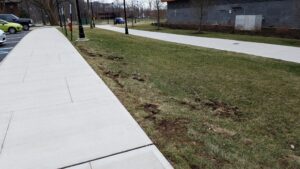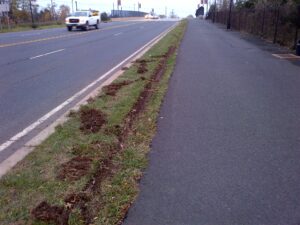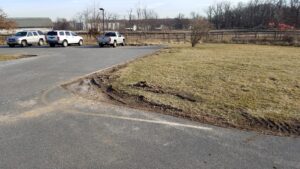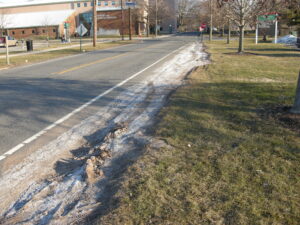Main Content

While the warm weather has allowed many of us to get out and enjoy the outdoors, you may have noticed the winter damage in many landscapes.
Winter traffic problems can be dramatic. Sod displacement is very common in turf grown along sidewalks, parking lots and streets where snow removal is done with large utility vehicles or trucks. Displaced sod (divots) should be replaced as soon as possible during late winter and early spring to ensure survival and re-rooting of the sod. Rutting from wheeled equipment cutting pavement corners can be very severe due to the wet, soft soil conditions common to winter. Repair of ruts is more difficult because the compacted soil surrounding the rut will inhibit the future growth of vegetation (turf or weeds). Filling ruts with soil may re-establish a smooth surface for re-seeding or re-sodding but the underlying problems of compaction remain. Paving these corners may ultimately be the best solution.


De-icing salts also damage turf cover and will certainly intensify any damage caused by rutting or sod displacement. Salts that accumulate in low-lying and poorly drained areas along parking lots and roads will not recover quickly from salt accumulation. In fact, the accumulated salt will likely linger for months to years (depending on the severity of the poor drainage and amount of accumulated salt). Simply covering these areas with an inch or two of topsoil will not solve the problem because the underlying salt will not drain/wash away and will eventually wick (capillary rise) up into the new soil layer. Correcting the drainage problem is essential for alleviating the problem of vegetation damage from de-icing salt accumulation.
